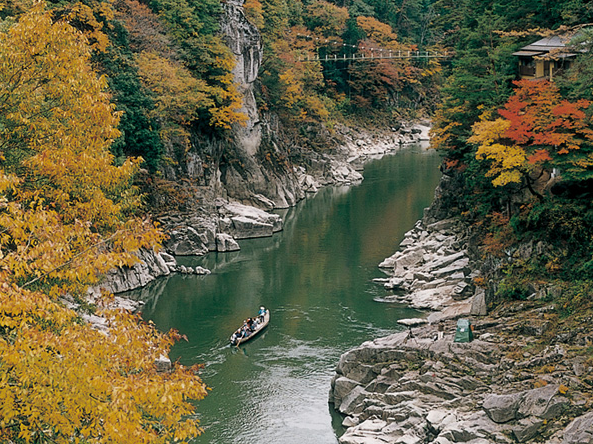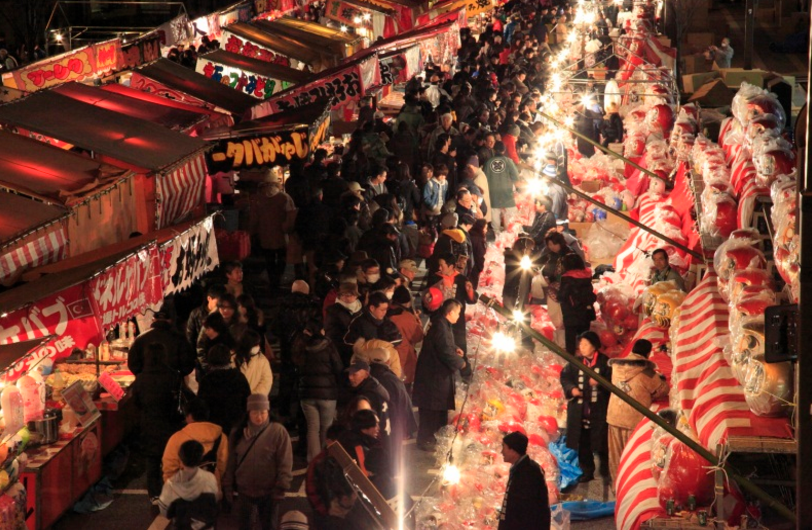Iida City: The Little Kyoto of Southern Shinshu
Iida City flourished as a castle town of the Iida Domain during the Edo period. With its townscape reminiscent of the castle town era and its abundance of traditional performing arts, it is known as the Little Kyoto of Southern Shinshu.
Iida City is also a town that has developed through its apples and puppet theater. Visitors can enjoy the Tenryu Boat Descent and the Tenryu Line Descent in Iida. You can ride wooden boats down the majestic valleys, experiencing different sceneries depending on the season, and enjoy the charm of each season.
Incidentally, the Tenryu Boat Descent is conducted upstream, where you can enjoy the thrilling splashes of water. The Tenryu Line Descent, on the other hand, is more leisurely, making it ideal for those who want to take their time and enjoy the scenery.

Quoted from the Official Website of the Shimoshima Village Tourism Association
Let’s go see the Shimotsuki Festival!
Location: Held at various shrines in Kamimura and Minami-Shinano, Iida City, Nagano Prefecture.
Date: December 1-15, 2018
Dates vary by shrine.
Access: Access methods vary depending on the shrine.
http://shimotsukimatsuri.com/ (Official Shimotsuki Festival Website)
For details on access and schedules for each shrine, please refer to the official website above.
The Shimotsuki Festival is a Yudate Kagura (boiling water ritual dance) passed down in the region known as “Toyama-go” in southern Shinshu. It is designated as an Important Intangible Folk Cultural Property by the Japanese government. The exact origin of the Shimotsuki Festival is unknown, but it is said to preserve the form of the Yudate ceremony that was conducted at the imperial court during the era of Emperor Seiwa (859-876) almost in its original form.
Held in the old lunar month of November (now December), when the sun’s power is at its weakest and the vitality of all life wanes, the festival involves inviting the gods, boiling water, offering it, and bathing in it. This ritual symbolizes the rebirth of both the gods and humans.

Quoted from Travel Net Shinshu
The same festival can be different depending on the region!
The highlight of the Shimotsuki Festival is the Yudate Kagura. As the festival progresses towards its latter half, masks (omote) that are preserved at each shrine make their appearance. These masks represent gods and farmers, and the performers wearing these masks dance and splash boiling water with their bare hands.
In the Shimotsuki Festival, depending on the region, there are differences in the types of masks, dance movements, music, and the number of cauldrons used. The festival is broadly divided into four categories: Kamimachi-style, Shimoguri-style, Kisawa-style, and Wada-style.
This is one of the highlights of the Shimotsuki Festival, as it showcases how the festival spreads and evolves to reflect the local circumstances, allowing attendees to enjoy different aspects of the same Shimotsuki Festival in various regions.
Among the many masks, the most popular one is called “Shimen,” performed by four young men in a wild, vigorous dance. This mask is not present in the Wada-style festival but can be seen in the Kisawa-style and other related festivals.
This festival is the inspiration for “Spirited Away”!
Did you know that the Shimotsuki Festival is one of the inspirations for the famous film “Spirited Away”?
The Shimotsuki Festival is said to be a festival of “offering hot water to the gods,” where “the gods bathe in the water to cleanse themselves of impurities and are reborn with pure souls.” This unique concept of a “hot spring resort for the gods” greatly influenced director Hayao Miyazaki.
Interestingly, in “Spirited Away,” Chihiro passes through a tunnel to enter the world of the gods. Similarly, in Toyama-go, where the Shimotsuki Festival takes place, one must pass through a tunnel to enter the village.

Quoted from Hokuriku-Shinetsu Tourism Navi
A Festival Passed Down Through the Ages
This festival, where gods come to relieve their physical fatigue and purify themselves, is reminiscent of the “Aburaya” from “Spirited Away.” It’s a highly recommended festival for those interested in traditional kagura (sacred dances) or fans of “Spirited Away.” Why not visit it at least once?
※For detailed videos, click here.
※The featured image is quoted from Travel Net Shinshu.
(Edited by 千八乃)






















